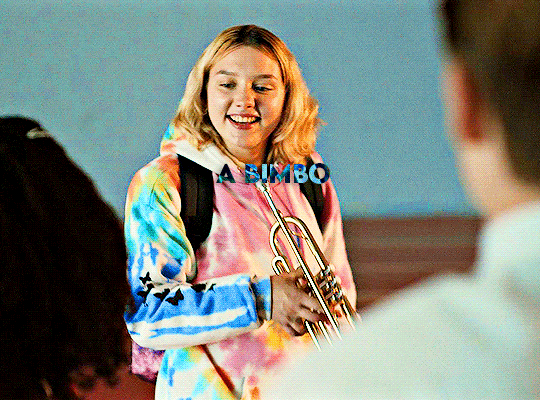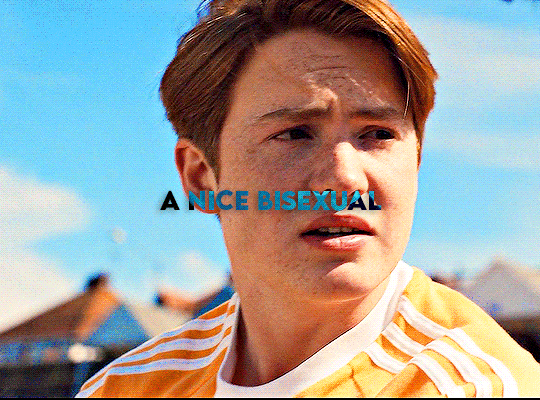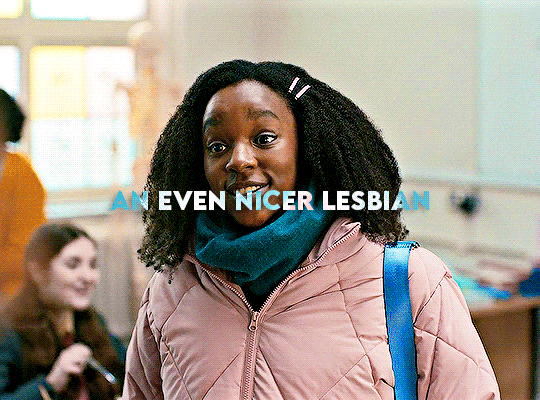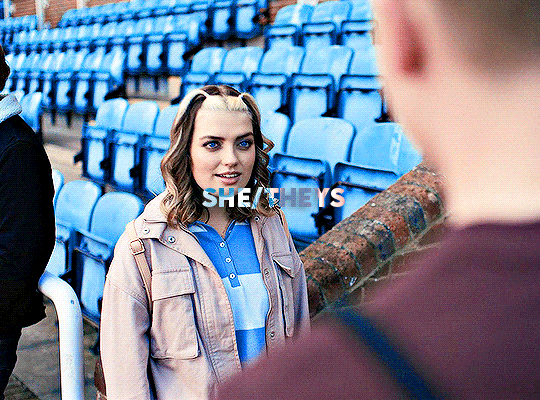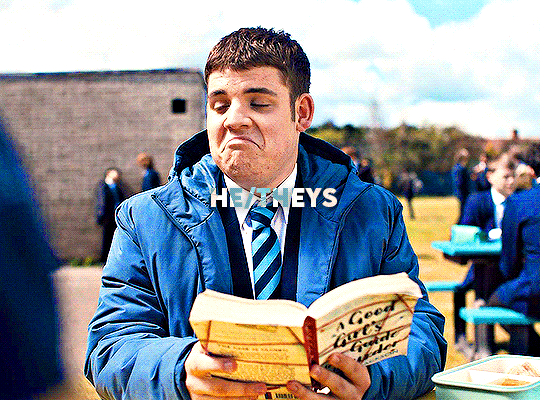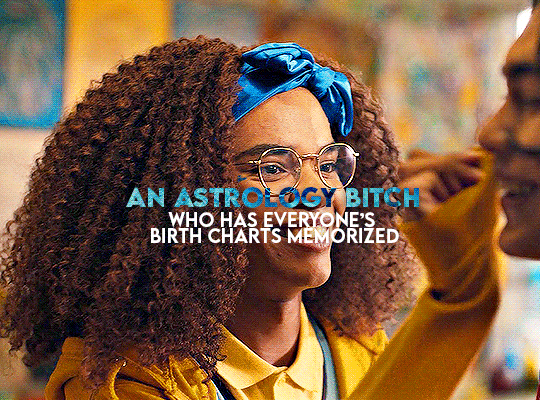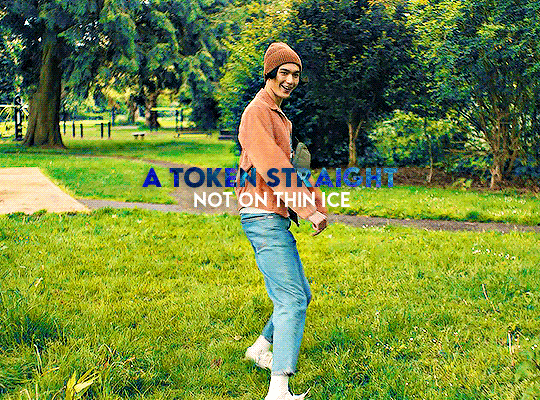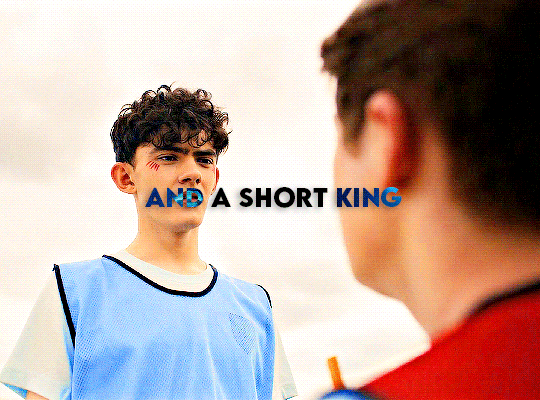Well, basically my side blog that is 100% dedicated to Druck and all other SKAM remakes. he/him infp
Don't wanna be here? Send us removal request.
Text
could anyone give me good pynch fanfic recommendations?? pretty please :) thanks
9 notes
·
View notes
Text
THREES THREES THREES:
Oh hello. I want to talk about the stylistic/textual role of Threes in The Raven Cycle.
Threes – as a general concept and as a number – are a major symbol and motif in the series. Maggie tells us that threes are important from the very first book: from Maura’s favorite saying being “good things come in threes” to Persephone telling Adam that “things are always growing to three or shrinking to three,” threes are discussed at length in the text of the narrative. Maggie also shows us that threes are important as a motif/symbol for important aspects of the story: three Raven Boys, three Fox Way women, three Lynch brothers, three main ley lines, three sleepers, etc. Threes are, textually, incredibly significant in The Raven Cycle, and we know this because we are shown AND told it throughout the entirety of the books.
We all know the significance that is given to threes in the story itself, but what I want to talk about is the usage of a thrice-repeated word or short phrase (going forward I’m referring to this as “Threes” or “a Three”) as one of Maggie’s writing signatures (across the series, there are 65 Threes). This creates a meta level to threes being an important aspect of The Raven Cycle universe. A classic example of a Three (one of my favorites, in fact) is from The Dream Thieves:
“As they walked, a sudden rush of wind hurled low across the grass, bringing with it the scent of moving water and rocks hidden in the shadows, and Blue thrilled again and again with the knowledge that magic was real, magic was real, magic was real.” (TDT, 12)
In a way, the Threes join the intradiegetic (what is happening within the narrative itself) with the extradiegetic (what the narration is communicating solely to the reader). The reader and characters are told explicitly that the number three is significant, important, notable, and powerful. In using Threes as a writing signature after giving the reader that information, the Threes are designed to signal to the reader that this line, this moment, is important.
So the question is: What Are The Threes Trying to Tell the Reader???
Amazing question.
In my recent TRC reread, I was already keeping track of Threes, because I was curious to see how many times they appeared. And then my sister, who was also rereading, said something interesting (after reading this Three from The Raven Boys):
“He was full of so many wants, too many to prioritize, and so they all felt desperate. To not have to work so many hours, to get into a good college, to look right in a tie, to not still be hungry after eating the thin sandwich he’d brought to work, to drive the shiny Audi that Gansey had stopped to look at with him once after school, to go home, to have hit his father himself, to own an apartment with granite countertops and a television bigger than Gansey’s desk, to belong somewhere, to go home, to go home, to go home.” (TRB, 370)
My sister said: “Adam’s like Dorothy.” And then she said: “Wait. Do you think the Threes are like a spell? Or… a wish?”
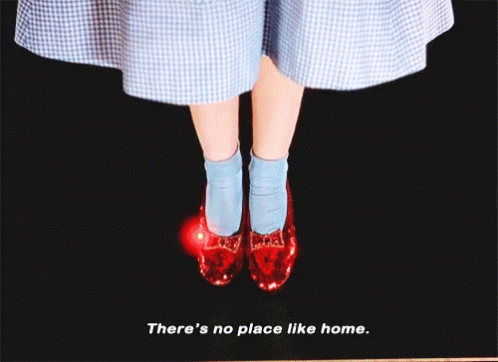
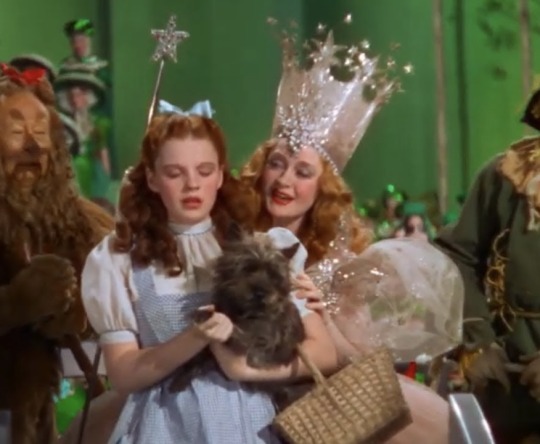
Which was……. Interesting.
What I have determined, after completing my reread and spending way too much time analyzing this, is that a Three is either a wish, a hope, a longing, a prayer – or, alternately, a warning, a curse, a negative promise.
In either sense, Threes are a foreshadowing of what is to come – whether it be good or bad. Threes exist to signal to the reader that they should be paying close attention to whatever is being said or observed.
Threes in….. Everything Else:
Before we get too far into TRC Threes, let’s talk about the precedent for three being an important number in art, math, storytelling, etc. I found some interesting information about how three is a satisfying number for the brain:
Grouping things in threes leverages the power of repetition to aid memory; denote emotional intensity or importance; and ease persuasion (research by Shu & Carlson (2014) found that three positive claims is the most effective for persuasion).
Three is the smallest number that the brain can still recognize as a pattern, and the brain loves pattern and repetition. This is true in visual art – having three main compositional figures to create a pleasing image – and also in storytelling and narrative. Using threes for repetition in storytelling is a very common occurrence.
Some classic examples of repetitive threes are Shakespeare’s “tomorrow and tomorrow and tomorrow” or Lincoln's “a government of the people, by the people, for the people.” In each of these examples, a repetition of three is used to create pleasing auditory rhythm. There is something inherently memorable about literary Threes.
Perhaps the most interesting information I found while digging into the precedent for threes is about the rule of threes in folktales. This information happens to come from Wikipedia (side note: Wikipedia is a modern tool of collective consciousness and we should utilize it more). This page describes how in its most basic form, the rule of threes in storytelling is just beginning, middle, and end. Because this is such a common convention, writers tend to “create triplets or structures in three parts.” It then talks more directly about the use of threes in folktales:
“Vladimir Propp in his Morphology of the Folk Tale, concluded that any of the elements in a folktale could be negated twice so that it would repeat thrice.”
This is especially interesting to me. The idea that an element of a folktale “could be negated twice so that it would repeat thrice” shows up prominently in the plot of The Raven Cycle – a book that is heavily influenced by folktale motifs – but also in so many of the folktales/fairytales we all know. A classic example of this would be Goldilocks and the Three Bears – Goldilocks must try porridge that is too hot, too cold, and then, finally, just right. The journey of these three actions is satisfying to the brain because it is a complete pattern: the third and final result of “just right” porridge is only satisfying because of the two “not right” porridges that preceded it.
Getting back to Stiefvater Threes:
For anyone who’s seen The West Wing (and even those who haven’t), here’s a good way to explain what I think the Threes are doing. You know that thing they do during a The West Wing “walk and talk” where two characters will be throwing information and little quips back and forth at each other rapid-fire, and then suddenly, they will both stop walking, and the camera will stop moving, and they’ll say a line that contains really important information that you need to know to understand the storyline of that episode? That’s what Maggie’s Threes are doing for the reader. That’s what 6:21 is doing for the characters. It’s intentional: the writers/directors/actors/camera operators on The West Wing know that they’re throwing a lot of information at you, and know that they need to get you to pay attention to the most important parts somehow, so they do it by forcing the viewer to lean in and listen. It changes the focus and energy of the scene from something with momentum to something that pauses, and therefore makes you pause.
The Threes compel the reader to pause and consider the information being delivered as more important than they might consider it if it was not written as a Three. “Maura’s expression was dark” does not read the same as “Maura’s expression was dark, dark, dark.” And in a text where characters directly state the magical importance of threes, compounded by three as an overarching motif, there is clear intention and meaning behind these written Threes.
In the context of TRC, Threes act as a fourth-wall break.
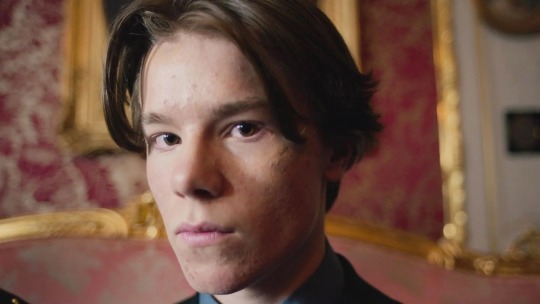
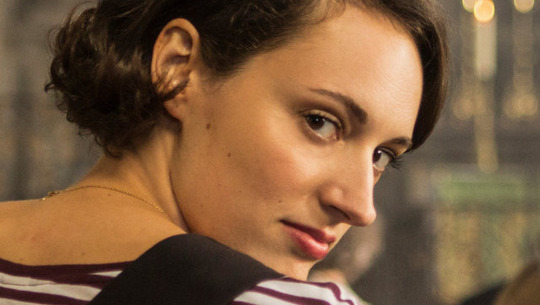
They are essentially a way to poke the reader and say: “Are you paying attention? Because you should be.”
These Threes use a symbolic motif – the rule of three – that is already heavily discussed in the text – to get the reader to pick up on the internal motivations of the character who is “wishing” their Three or the narration which is using a Three to foreshadow some important aspect of the plot.
The Threes are like the literary equivalent of a record scratch. It stops you in your tracks, breaking the established rhythm and making you take notice of what is being said in a new way.
Let’s Look at Some More Threes (but just a few don’t worry)!
1. We get a classic Three, and a very Gansey Three, right after the group comes out of Cabeswater:
“‘What about that thing in the tree?’ Blue asked. ‘Was that a hallucination? A dream?’
Glendower. It was Glendower. Glendower. Glendower” (TRB, 231).
Finding Glendower is one of Gansey’s core wishes, one of his core longings. Although this line is a literal answer to Blue’s question – he saw Glendower in the tree – in making it a Three, Maggie has given it added weight and meaning. It is prayer-like in its intention. It is almost an incantation: by saying it in Three, Gansey wishes it into being.
2. In The Raven Boys, after Gansey has bribed Pinter to keep Ronan at Aglionby and has learned that Noah has been dead the whole time they’ve known him, we are given this Three:
“The Pig exploded off the line. Damn Ronan. Gansey punched his way through the gears, fast, fast, fast” (TRB, 311).
This moment foreshadows what directly follows: a distinct lack of fast as the Camaro breaks down and Gansey is held at gunpoint by Whelk. This Three is not a prayer, but a warning, and an indicator to the reader that something important is about to happen. Had Gansey not been trying to go so “fast fast fast,” the car might not have broken down; because the Three incanted it, disaster follows.
3. To return to a Three I have already mentioned, but follows the typical Three structure:
“...to go home, to go home, to go home” (TRB, 370).
In this scene, Adam’s wish is less about actually wanting to return to his literal home, because his house was never really a home for him. Adam’s wish/longing is for a home that he could return to, that he would want to return to. He is longing for a place/feeling/experience that does not exist for him. The Three in this sentence comes after a string of active wishes/longings, and by ending with this Three, it casts a spell of sorts, honing in on the truest underlying wish that Adam has. In using the phrase “to go home” three times, the narrative is making sure you, the reader, know that this want, this need, this wish, is the most Important to Adam, and will drive his actions for the rest of his story.
Most of the Threes feel like this. They are often tacked on at the end of a sentence or embedded in a sentence. They’re an addendum to the action of the story. They’re like casting a spell – once to manifest, twice to charge, three to cast.
…..And Some Other Types of Threes:
Then there are the Threes that don't follow the typical pattern of the same word repeated three times one right after the other, but are still a Three in a different way.
There are short phrases/sentences that are repeated three times throughout a page or chapter. In the prologue of The Raven King, we get this:
“He was a king…
He was a king…
He was a king.
This was the year he was going to die.” (TRK, 1-3)
In this case, the Three acts as a promise of Gansey’s kinghood, but in ending the sequence with “this was the year he was going to die,” the promise of the three is given a condition: it is not going to be a joyful kinghood, but instead a kinghood intertwined with the death we’ve known is fated for Gansey.
One of Adam’s Threes from Blue Lily, Lily Blue, uniquely breaks the mold of Threes in a format that does not appear anywhere else in the four books:
“It was his father.
He opened the door.
It was his father.
He opened the door.
It was his father” (BLLB, 242).
❋ (We’ll talk about this one more in-depth later.)
There are also a few “unfinished” Threes:
In The Raven King when Ronan is having a nightmare (infected by the demon) about Matthew and the mask, he has this Three:
“Ronan’s throat was raw. I’ll do anything! I’ll do anything! I’ll do anythi
It was unmaking everything Ronan loved.
Please” (TRK, 96).
With the uncompleted Three, there is an uncast wish. Ronan’s wish is about Matthew, yes of course, but also about being willing to do anything to keep those he loves (ie. Adam, Gansey, Blue, his brothers) out of the reach of the “unmaking.” This unfinished Three serves to foreshadow the harm that does ultimately befall first Adam and then Gansey as a result of the unmaking of Cabeswater by the demon: without the Three spell completed, his wish is not fulfilled.
*This is Not all the uncommon/mold-breaking Threes, just a few that are interesting!
Do All Threes Come to Fruition???
The short answer is: No. Or at least not in that way.
Once again looking at the text of The Raven Cycle, we are given an answer of sorts. In discussing Gansey’s predicted death, Maura says:
“First of all, the corpse road is a promise, not a guarantee” (TRB, 155).
This seems to apply to Threes as well. Threes are not a guarantee. They are a promise. Not all Threes come to fruition the way one might expect – or at all, for that matter. The important part of Threes is not that they will definitely come true, it’s that they could come true, because the Three gives them the potential to come true.
Structure, Structure, Structure:
The main Threes structures are:
Three of the same word separated by commas:
“magic, magic, magic” (TRK, 59).
A short phrase/sentence separated by periods:
“My father. My father. My father” (TDT, 369).
A short sentence that is repeated three times throughout a page/paragraph:
“Gansey did not breathe…
Gansey did not breathe…
Gansey did not breathe” (TRK, 209).
A word that is repeated three times and is connected by “and”:
“Round and round and round!” (BLLB, 224)
Italics vs. Non Italics:
Italics in The Raven Cycle are often used for character’s inner thoughts/anxieties. This continues to be true in the context of Threes. A Three that is not written in italics indicates a promise, or some foreshadowing of a plot point being foretold through the Three – it is typically more “real” – whereas a Three that is written in Italics seems to indicate a wish/hope/longing that is unattainable in some way. Italics almost always indicate a Three that may never come to fruition, or at least not in the way the character hopes it will.
An example of this distinction can be found in chapter three (hah) (I don’t believe in coincidences and neither does Gansey) of The Raven King:
First we are met with Ronan wishing/hoping to return home:
“That morning, Ronan Lynch had woken early, without any alarm, thinking home, home, home” (TRK, 24).
This home, home, home, is in reference to the idea of home rather than the reality. Ronan is wishing to return to a home that does exist physically, but is not the same as in his memory – he wants to be at the Barns as it was in his childhood.
Then, in the very same chapter, Ronan actually returns home and we are given this Three:
“Slowly his memories of before — everything this place had been to him when it had held the entire Lynch family — were being overlapped with memories and hopes of after — every minute that the Barns had been his, all of the time he’d spent here alone or with Adam, dreaming and scheming.
Home, home, home” (TRK, 27).
This second home, home, home, is about the actual reality of being in his childhood home – the good and bad that has existed in the years since the childhood he longs for.
The Addition of AND:
The most notable use of “and” is in Noah’s very last chapter:
“Sometimes he got caught in this moment instead. Gansey’s death. Watching Gansey die, again and again and again” (TRK, 416).
When “and” is added into a Three, it becomes circular, cyclical. The “and” gives the Three a sense of infinity, or creates a loop of sorts.
This Three operates in the same way “tomorrow and tomorrow and tomorrow” does in Macbeth – it is meant to convey the endlessness of time, a relentless cycle of tomorrows.
❋ While there are not many of these Threes with “ands” in The Raven Cycle, there are other examples of Threes or Three-like occurrences that fulfill the same purpose as the “and.” For example, remember this Three:
“It was his father.
He opened the door.
It was his father.
He opened the door.
It was his father.” (BLLB, 242).
In this case, instead of the word “and,” the Three (It was his father) is connected by “he opened the door.” This Three is accomplishing the same feeling as “again and again and again” – the feeling of being caught in an endless loop.
Another example of an (implied) “and” in The Raven Cycle is: Gansey’s life. Gansey starts out alive and then dies as a child only to be reborn, and then killed again through his sacrifice, and then reborn for a final time. Gansey is Alive, Dead, Alive, Dead, Alive. And so Gansey’s life is a cycle of Three.
As with the Threes that contain “and,” Gansey starts where he ends: alive.
Other Ways Threes Show up in The Raven Cycle:
I will state the obvious once again: there are three Raven Boys, three Lynch brothers, three Fox Way women, three sleepers, three main ley lines (the lines that “seem to matter” to Glendower’s story), Gansey the Third (Gansey Three, Dick Three).
There are also the more obscure: the “three kinds of secrets” in The Dream Thieves prologue and epilogue; each Lynch brother inheriting three million dollars from Niall Lynch; the three figures with Blue’s face on the tapestry and later as a vision in Cabeswater; Adam and Gansey going to DC for three days; the shield pulled from the lake having three ravens embossed onto it; Ronan having dreamt Matthew at the age of three; the door to the Demon’s room needing “three to open” it; Aurora Lynch staying awake for three days after Niall died.
And of course, we have the ley line symbol/chapter header:
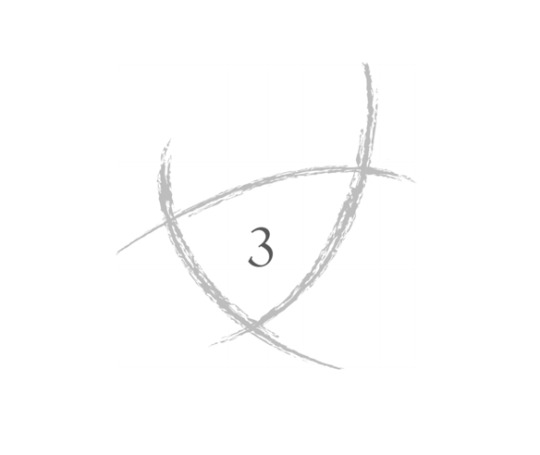
And then there are the 300 (three hundred!) Fox Way “villain” readings. (This was something that was particularly interesting to me.)
The first antagonist we meet is Whelk. When he comes for a reading at 300 Fox Way, he first pulls the Three of Swords.
When the women all draw cards together, they pull identical cards for Whelk: three of the Knight of Pentacles, then three of the Page of Cups. After drawing, essentially, three threes (the Three of Swords, then two sets of three matching cards) in this reading, the first Three of the entire series appears:
“Maura’s expression was dark, dark, dark” (TRB, 124).
The second “antagonist” we meet is the Gray Man, who comes to 300 Fox Way in The Dream Thieves to “observe.” Maura, Calla, and Persephone are predicting which card is on the top and bottom of the stack and the first card, predicted by Calla, is the Three of Cups off the top of the deck that Mr. Gray is holding (a remarkably happy card in stark contrast to Whelk’s Three of Swords).
When the third antagonist, Greenmantle, comes for his 300 Fox Way Reading he also draws the Three of Swords. The fact that each of the three antagonists come for a reading is in itself a sort of Three, but to further the importance of these moments, each of them draws some sort of three-related card.
All of the examples I have touched on have been more symbolic references to Three as a motif of the books as a whole. However, Threes also show up in the literal number of times important quotes are said/written.
I was tracking some of the most well-loved TRC lines to compile them, and noticed that the lines “don’t throw it away” and “safe as life” happen to appear exactly three times throughout the series. This was honestly pretty surprising based on the importance of those quotes – I would have assumed they showed up far more. Actually, they both appear twice in The Raven Boys and once in The Raven King. Threes, and the importance of Threes, is embedded so strongly into the narrative of The Raven Cycle that even the quotes we all think of as the most beloved of the series follow this rule of Threes.
Now, could you chalk some of these up to coincidence? I guess. But Gansey doesn’t believe in coincidences so I don’t either. So what’s the point of all these Threes?
Conclusion???
In a literal, literary way, Threes are a fourth wall break to make the importance of a moment obvious, but I’m not sure what the larger “point” of Threes is. My best analysis comes from the idea of The Raven Cycle being all about time and Threes playing into the importance of time as a sort of record scratch or loop. The Threes, as a stylistic, written motif, seem to connect the time-based cycle the characters experience to the time-based cycles the reader experiences by reading the books.
But my conclusion feels incomplete and so I would like to rely on the collective for this one – just about the most Raven Cycle thing you can do. So I’m asking you, the collective you, what conclusion would you draw? What do you think?
What I do know for sure is that Threes are magic, magic, magic.
For Your Convenience: Here is the textual significance given to threes within the books (chronologically):
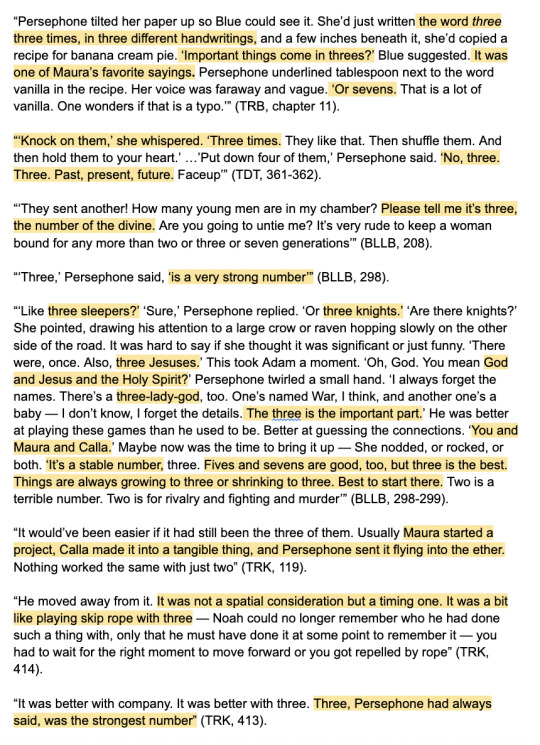
And here are the Threes, Threes, Threes (compiled):


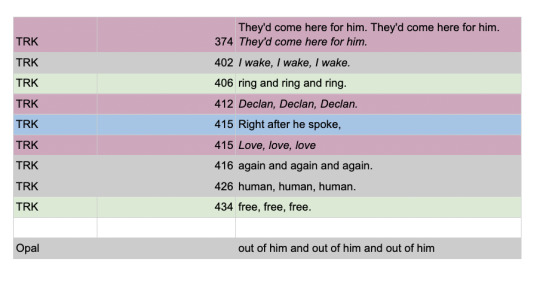
(If you made it to the end of all this, I love you. Have a gold star and a hug <3)
209 notes
·
View notes
Text
the fact that s7 has actually made me want to protect Finn — he doesn’t know what’s going on between Bobbie and Anaïs at all… that clip where he patched up Anaïs and talked about his parents’ divorce and gave her a hug actually really endeared me to him, and now I FEEL BAD
13 notes
·
View notes
Text
Hmm I don’t know what to think. I’m kind of hoping Bobbie reached out to Finn for non relationship reasons (e.g. to have someone to hang with that isn’t as closely linked to Anaïs) and Finn misinterpreted it
10 notes
·
View notes
Text
personally i think there should have been at least one episode where sokka collects aang and zuko and is like, “looks like we’re running low on supplies. time for a GUYS-ONLY field trip. three days of hunting and fishing and polishing our swords. y’know, manly warrior stuff. (aang, sotto voce: actually sokka i’m a vegetarian as you know–) you girls have fun sitting around braiding your hair and talking about your crushes” and then the entire episode is just zuko and sokka lying around by a river, plucking blades of grass and staring up at the stars confiding in each other their deepest feelings and most secret insecurities while aang braids flower crowns, and whenever the screen cuts back to katara and toph and suki, they’re fighting and screaming and hacking away at river pirates and evil spirits and legions of assassins and hired mercenaries with swords. you know, as girls do.
and when the boys finally drag themselves back to camp (they stayed up way too late discussing what true leadership really means and whether or not power always corrupts) they find suki and toph and katara lounging around with black eyes and fresh bruises and bloodstained weapons and sokka shrieks, “what were you guys DOING while we were gone???” and karata just shugs innocently and says in her sweetest voice, “oh, you know. just girly things”
83K notes
·
View notes
Text
MASTERPOST: Everything You Need To Know About Living Independently for the First Time
On leaving home for the first time:
Leaving Home before 18: A Practical Guide for Cast-Offs, Runaways, and Everybody in Between
Ask the Bitches: “I Just Turned 18 and My Parents Are Kicking Me Out. How Do I Brace Myself?”
Ask the Bitches: I Want to Move Out, but I Can’t Afford It. How Bad Would It Be to Take out Student Loans to Cover It?
How To Start at Rock Bottom: Welfare Programs and the Social Safety Net
Advice I Wish My Parents Gave Me When I Was 16
Ask the Bitches: How Can I Make Myself Financially Secure Before Age 30?
You Won’t Regret Your Frugal 20s
Master the Logistics and Etiquette of Moving Out
Season 2, Episode 5: “What Do I Need to Know about Moving into My First Apartment?”
On basic finance:
How the Hell Does One Open a Bank Account? Asking for a Friend.
How Do You Write and Cash Checks? Asking for a Friend.
Budgets Don’t Work for Everyone—Try the Spending Tracker System Instead
You Must Be This Big to Be an Emergency Fund
A Hand-Holding Guide to Getting Your First Credit Card
How to File Your Taxes FOR FREE: Simple Instructions for the Stressed-Out Taxpayer
Dafuq Is Credit and How Do You Bend It to Your Will?
How to Save for Retirement When You Make Less Than $30,000 a Year
Dafuq Is Interest and How Does It Work for the Forces of Darkness?
What’s the Difference Between Savings and Checking Accounts, and How Should I Be Using Them?
Dafuq Is a Down Payment? And Why Do You Need One to Buy Stuff?
Dafuq Is Insurance and Why Do You Even Need It?
Investing Deathmatch: Investing in the Stock Market vs. Just… Not
Dafuq Is a Retirement Plan and Why Do You Need One?
Do NOT Make This Disastrous Beginner Mistake With Your Retirement Funds
On managing your household:
How the Hell Does One Laundry? Asking for a Friend.
How the Hell Does One Wash Dishes? Asking for a Friend.
Ask the Bitches: Why Are Painted Mason Jars the Internet’s Only Solution to My Tiny Apartment Woes?
9 Essential Tools for Apartment-Dwellers (and 6 That Are Kinda Useless)
Ask the Bitches: How Can I Survive in an Apartment with No Heat?
How to Save Money on Your Beloved Pets
Bullshit Reasons Not to Buy a House: Refuted
How To Maintain Your Car When You’re Barely Driving It
25 Tricks to Stay Cool WITHOUT Air Conditioning
On feeding and caring for yourself:
You Should Learn To Cook. Here’s Why.
How to Shop for Groceries like a Boss
If You Don’t Eat Leftovers I Don’t Even Want to Know You
I Think I Need to Go the Emergency Room?
Ask the Bitches: Ugh, How Do I Build the Habit of Taking Meds?
On maintaining relationships:
Season 1, Episode 8: “My Mother Demands Information About My One-Night Stands.”
Season 1, Episode 3: “My Parents Have Bad Credit. Should I Help by Co-signing Their Mortgage?”
Ask the Bitches: How Do I Say “No” When a Loved One Asks for Money… Again?
Ask the Bitches: My Dad Sucks with Money. How Do I Make Him Change?
You Need to Talk to Your Parents About Their Retirement Plan
Season 2, Episode 1: “I’m Financially Stable, but My Friends Aren’t. The Guilt Is Crushing!”
On starting your career:
22-Year-Olds Don’t Belong in Grad School
High School Students Have No Way of Knowing What Career to Choose. Why Do We Make Them Do It Anyway?
The Actually Helpful, Nuanced, Non-Bullshit Way to Choose a Future Career
Your College Major May Not Prepare You for Your Job—but It Can Prepare You for Life
The Ugly Truth About Unpaid Internships
Your School or Workplace Benefits Might Include Cool Free Stuff
3K notes
·
View notes
Text
anyone knows where i can watch skam italia s5 with english subtitles?
7 notes
·
View notes
Text
soooo i have such high hopes about this new season and new gen because WtFock was a masterpiece and also my expectations aren’t that high, i’m just thrilled to have a remake alive again
2 notes
·
View notes
Text
thank you fanfic writers who still write davenzi stuff. you are the sole source of my happiness.
#Druck#druck season 3#druck matteo#matteo florenzi#matteo x david#davenzi#I miss David so much#skam germany
71 notes
·
View notes
Text

I have something special for you guys! It's Pride Month Special Animation Short Film "LoveLoveLove"!
It's a compilation of tender, pure and cute moments of queer relationships.
Happy Pride Month!
Youtube link below!
2K notes
·
View notes
Text
i haven’t posted anything about this season yet, but i actually really like it so far? it feels true to who mailin is, whether you like her or not, and it’s interesting to see where things are going from here
26 notes
·
View notes
Text
SAME!!!
I must say I miss the times when I would immediately jump to tumblr after watching the newest druck clip and everyone would be excited and there'd be lots of gifs and theorys. now everyone is just so damn negative. I get it, Ava would've probably been the better main but why do so many feel the need to still watch the show if they are so unhappy and complain all the time? I love Druck and it will always be special to me and it breaks my heart that the actors and the whole team get so much hate.
16 notes
·
View notes
Text
it’s been over 2 years since this post and i still stand by it
I miss matteo florenzi every single day of my life and I live by that
103 notes
·
View notes
Text
life is going horribly right now, so i feel like druck should start up again real soon and be my therapist again. my ✨coping mechanism.✨ my ✨escapism.✨okay? okay.
8 notes
·
View notes
Text
Why Isi failed to find their shoe near the car in the morning? Like Mother Nature herself didn’t let this Cinderella go till the conversation with Finn during which he would tell Isi important words: don’t compare my situation to yours, try it, decide for yourself.
15 notes
·
View notes
Text
Which floor does Isi live on?
On to some rather unimportant topics:
I know that movie and film sets are all about illusions and that, probably, neither Isi’s nor Sascha’s apartment is connected to this stairwell and that the beautiful entrance from ep 8+9 is somewhere else entirely but i am confusion:
Isi’s apartment and their room has so many different doors. So I guess they were on sale, or something. But how big is it? Are there two floors?
1st floor?



same door?

new door: ground floor?


The entrance door of the apartment building opens right where the street is, while Isi and Umut entered their apartment building through the backyard in ep 9, as do Sascha and Isi while they leave in ep2. The steps are completely different, too.

I think there have to be two stairwells connected to their apartment to make this work. Isak had two stairwells, as well, in the OG. But this still does not explain why we have different floors. Maybe they did just use the other stairwell one time (ep 10) because they had to. It’s the only time we have a shot filmed from the apartment straight into the stairwell.
They gave us proof that Sascha lives above Isi, more than once. But everything else has me confused.
I know that Berlin architecture is a miracle of its own, so I wouldn’t even be surprised if the apartment building is exactly built like this (read: like confusion).
Edit:
@ragingbyesexual made a floor plan and yes (!) it does make a lot of sense and perfectly ties in with Berlin architecture (which can be confusing)
42 notes
·
View notes
